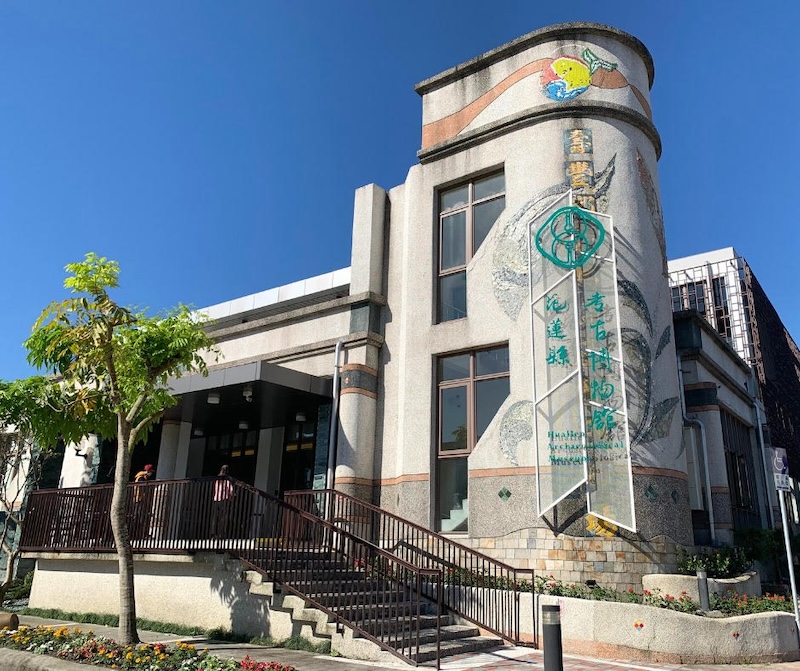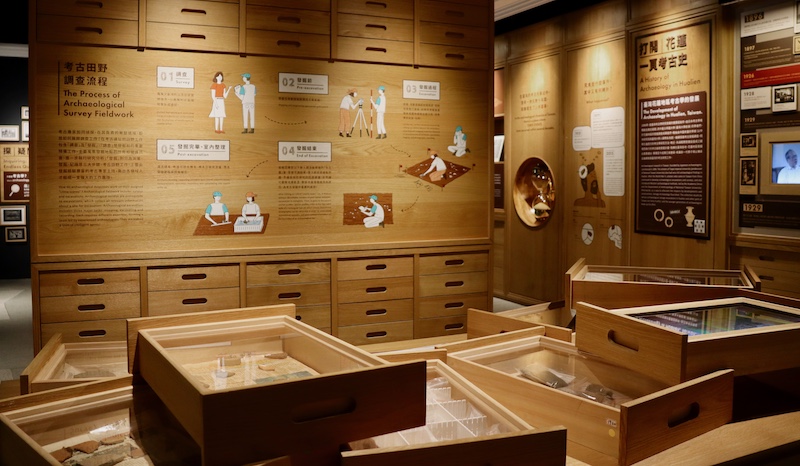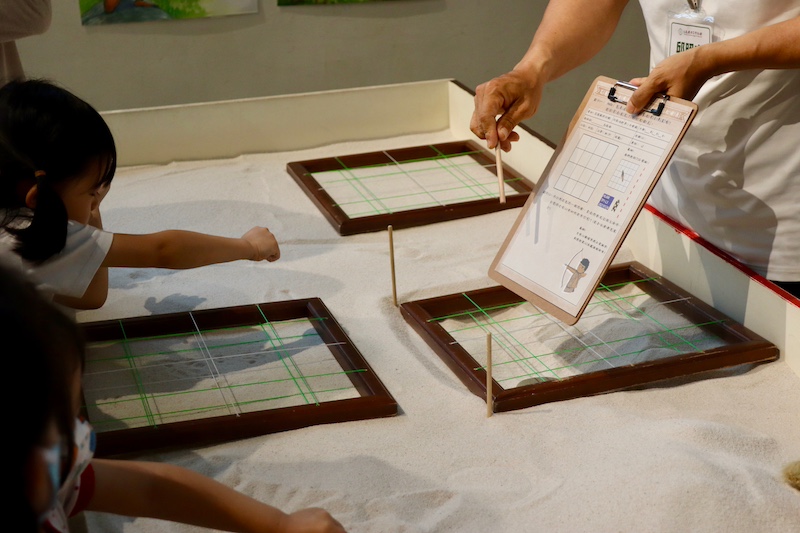【Museum Island Column】Archaeology at Your Doorstep: Hualien Archaeological Museum Conveys Prehistoric Culture Through Interactive Experiences
The Hualien Archaeological Museum, opened in 2021, features an exterior where its name overlaps with the stone-carved sign of its predecessor, “Shoufeng Township Public Enterprise Fengtian Market". (Provided by Hualien Archaeological Museum)
Author: Yeh, Chia-Yu (Freelancer) & Kuo, Kuan-Ting (Museum Associate Curator, Kaohsiung Museum of Fine Arts)
Translator: Hsieh, Chia Chun (Executive Editor, Museum Island by the Ministry of Culture)
Is this building the Fengtian Market or the Hualien Archaeological Museum?
The Hualien Archaeological Museum, opened in 2021, is housed in a building that was formerly the Fengtian Market. Located near Taiwan’s largest prehistoric jade workshop in the ‘Fengtian area,’ the museum’s core mission is to collect and preserve Hualien’s archaeological heritage.
The museum’s sign hangs above the entrance, while the original stone inscription “Shoufeng Township Public Productive Enterprises Fengtian Market (built-in 1986)" remains embedded in the wall, symbolizing the coexistence of antiquity and modernity in the context of archaeological excavation and historical preservation.
Currently, the museum’s permanent exhibition of unearthed artifacts and open storage display area caters to visitors of all ages and diverse backgrounds.
Experiencing the Archaeologist’s Treasure Hunt
The permanent exhibition is divided into three sections: Exploring the World of Archaeology, Seeing Through the Prehistory of Hualien, and Inspiration from the Past. The first section is designed to resemble an archaeologist’s study, featuring a blackboard that introduces various archaeological sites in Hualien. There is also an interactive projection on a desk displaying artifacts, records, and gloves to provoke the curiosity of visitors.
Visitors can activate interactive displays by touching replicas of frog-shaped jade ornaments and glass beads【Note 1】. Such simulation of the experience of flipping through an archaeologist’s field notes allows them to gradually understand the details of the artifacts’ uses and manufacturing techniques. Additionally, a giant golden hourglass in the exhibit serves as a symbol of the race against time in archaeological excavations.
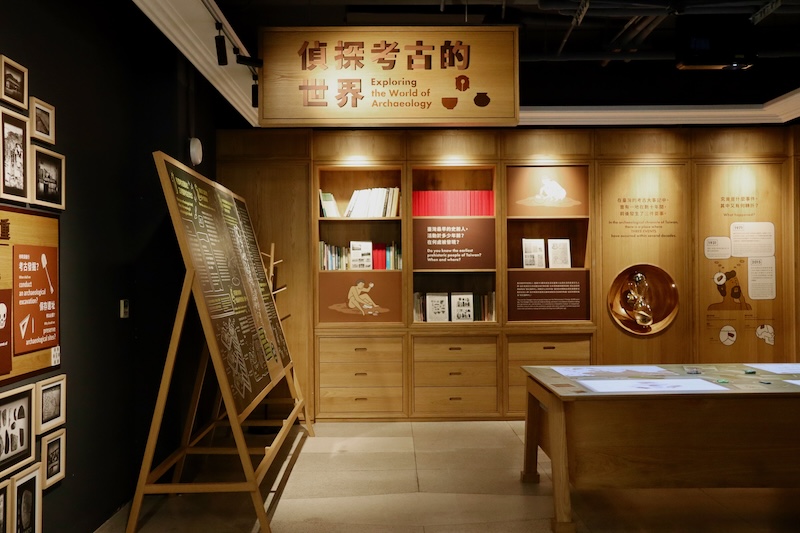
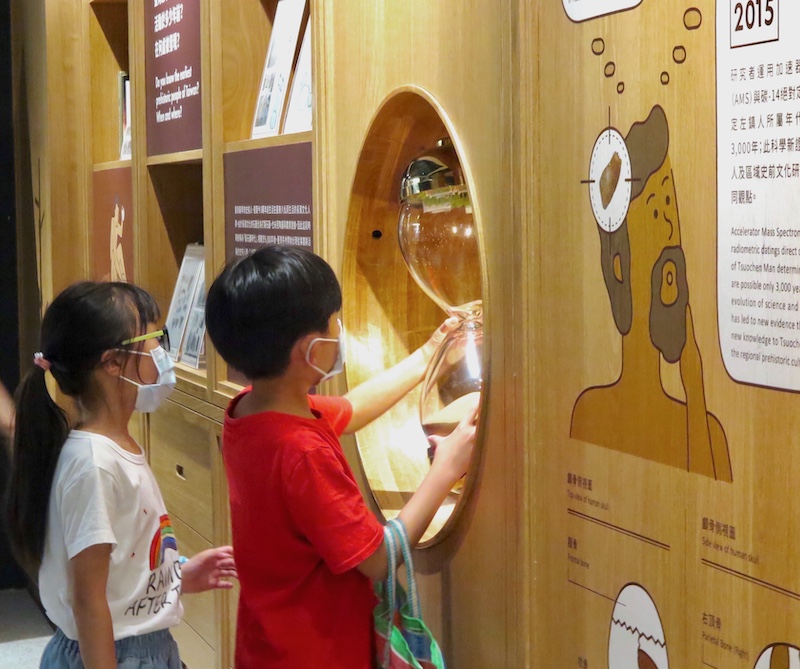
The next area replicates an archaeologist’s workspace, with stacked wooden boxes filled with labeled stones. The process of site discovery and field survey is explained through illustrations, and various tools like theodolites, measuring tapes, shovels, and dustpans are showcased. The audio guide offers a lighthearted approach, describing how everyday objects can be transformed into excavation tools—such as toothbrushes used for cleaning sand and dust from artifacts. It also encourages visitor participation and close observation by posing the question, “What archaeological tools are not displayed here?"
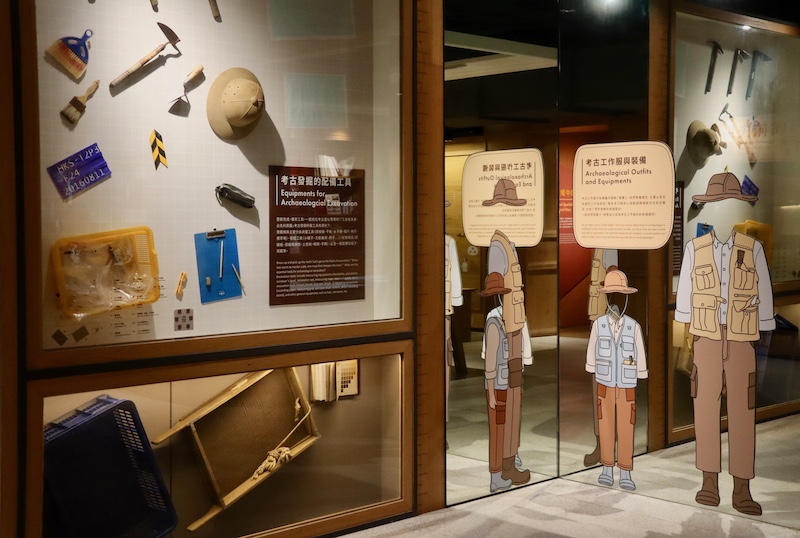
Reflecting on Prehistoric Objects: What Should We Leave Behind For Our Descendents?
The “Seeing Through the Prehistory of Hualien" section focuses on artifacts, shedding light on survival strategies across different geographical environments and eras through site distributions and prehistoric life zones. One of the highlights is the sidewall of the Huakangshan Site 【Note 2】, which has accumulated over nearly 4,000 years and has been relocated to the exhibition space. Visitors can engage in the immersive experience of archaeologists observing and recording the remains of various cultural layers within excavation pits.
The exhibition features simple illustrations and acrylic human models to demonstrate how objects were used, drawing a connection to modern life. For instance, the exhibition describes how the ancient stone-pile cooking method is reminiscent of today’s “hot stone pot," enabling visitors’ imagination and relating to prehistoric life.
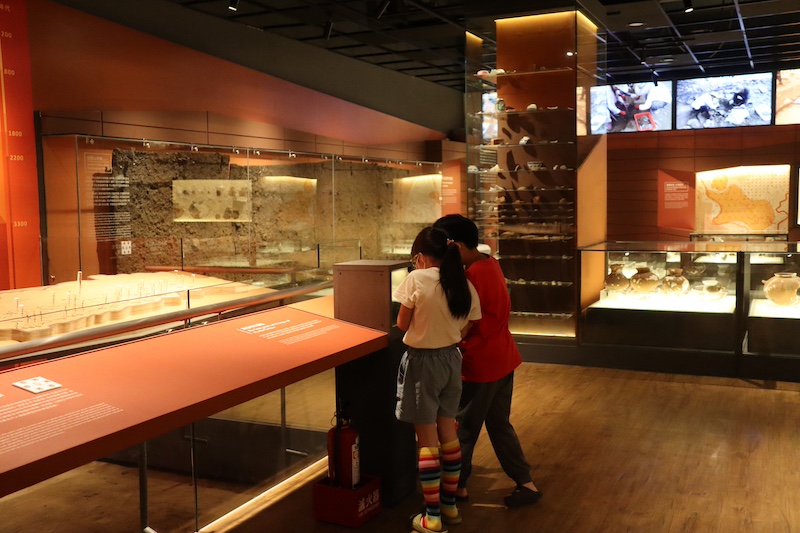
The “Inspiration from the Past" section showcases the significance of scientific testing in modern archaeology. Interactive displays demonstrate how archaeologists use Raman spectroscopy to analyze pottery origins and determine the age and gender of human remains.
The exhibition concludes with a thought-provoking “Future Archaeological Site" filled with modern garbage, encouraging visitors to reflect on our legacy for future generations to discover and interpret.
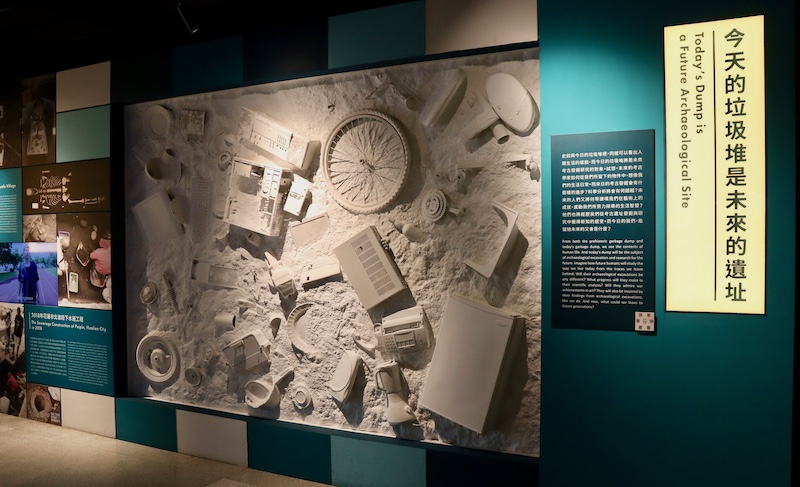
Archaeology as Part of Our Daily Lives
The museum provides audio guides in multiple languages, including Mandarin, Taiwanese, Hakka, English, Amis, and Truku, to ensure linguistic inclusivity. The “Pottery and Jade Storytelling – Open Storage Archaeological Artifact Collection Exhibition" is a rare example of an open archaeological artifact storage facility in Taiwan.
The museum’s first floor features a child-friendly archaeological sandbox experience area, complemented by educators and worksheets. The museum also regularly organizes archaeological experience teams to promote archaeological education.
Overall, the Hualien Archaeological Museum effectively promotes archaeology and public accessibility through interactive games, multilingual guides, and engaging exhibition designs. It has become a crucial hub for narrating Hualien County’s prehistoric culture.
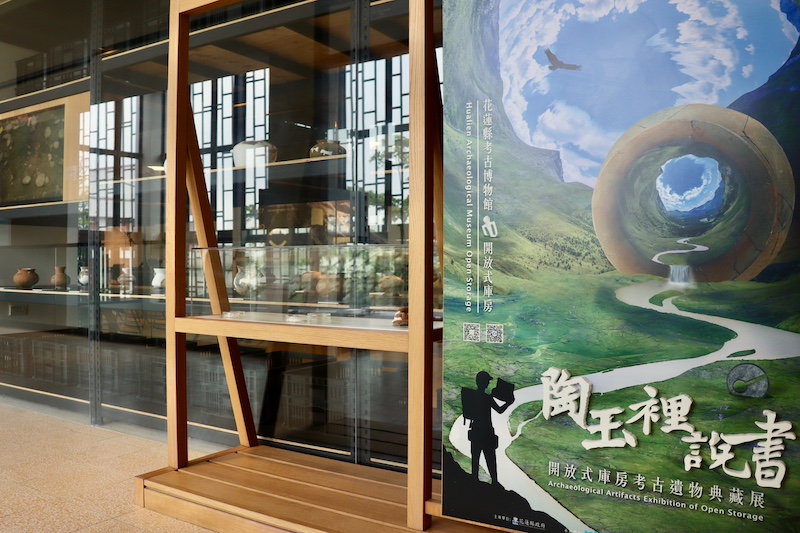
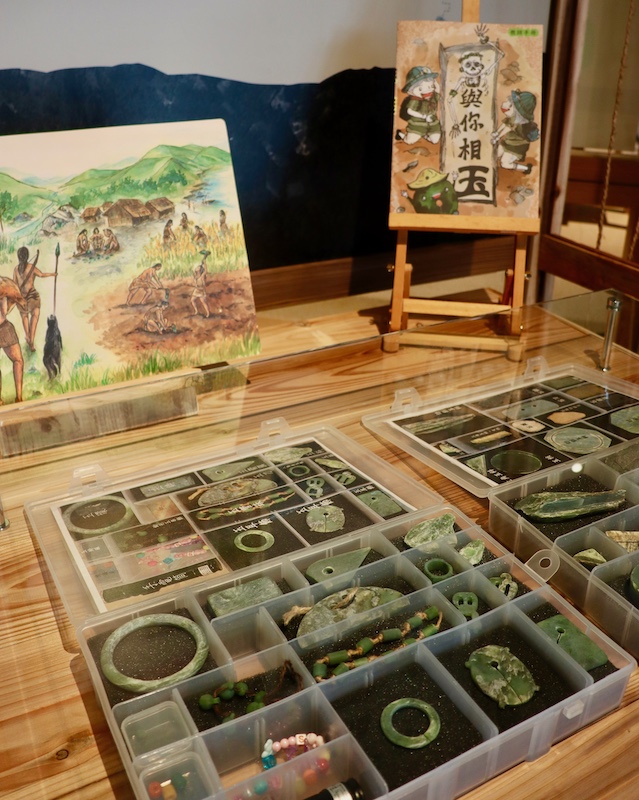
【Note 1】The full name of the frog-shaped jade ornament is “Huakangshan Culture Frog-Shaped Jade Ornament," belonging to the late Neolithic Huakangshan Culture (circa 2800-2300 years ago). With its lustrous jade quality, it is designated as a national treasure and is currently housed in the National Museum of Prehistory.
【Note 2】A sidewall refers to the vertical cross-section of a test pit during archaeological excavation.
❚ English Editor: Cheung, Billy Chi-Yiu (M.A., Graduate Institute of Museum Studies, TNUA)
❚ Executive Editor: Hsieh, Chia-Chun
資料來源:
- Hualien Archaeological Museum Official Website
- Hualien Archaeological Museum Permanent Exhibition Video
閱讀更多:【國內外資訊】
(本系列文章與文化部博物之島同步刊登)

